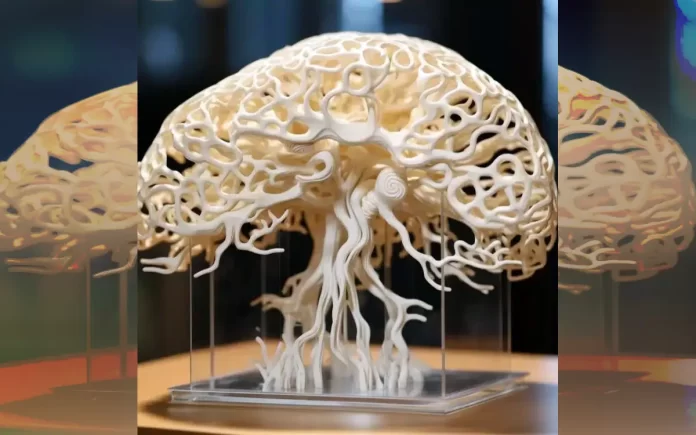Wisconsin, US: A groundbreaking achievement emerges as a team of scientists from the University of Wisconsin–Madison unveils the world’s first 3D-printed brain tissue.
This pioneering development in neuroscience showcases brain tissue that not only grows but also behaves akin to natural brain tissue, marking a substantial leap forward in the understanding of neurological and neurodevelopmental disorders.
“This could be a hugely powerful model to help us understand how brain cells and parts of the brain communicate in humans,” remarks Su-Chun Zhang, a professor of neuroscience and neurology at UW–Madison’s Waisman Center.
Innovative Technique Unveiled
The innovative method utilized for crafting the 3D-printed brain tissue involved a horizontal layering technique and a softer bio-ink, setting it apart from traditional 3D-printing methods that stack layers vertically.
Yuanwei Yan, a scientist involved in the process, explains, “Our tissue stays relatively thin and this makes it easy for the neurons to get enough oxygen and enough nutrients from the growth media.”
This unique approach enables the establishment of networks among neurons, closely resembling the intricate structures found in the human brain and fostering communication via neurotransmitters.
Zhang underscores the significance of this achievement, stating, “Even when we printed different cells belonging to different parts of the brain, they were still able to talk to each other in a very special and specific way.”
Unlocking New Frontiers in Research
The advent of 3D-printed brain tissue holds immense promise for advancing research in various neurological conditions and treatments. This breakthrough allows for:
- A controlled environment for studying brain functions and disorders.
- Precise control over cell types and arrangements, surpassing conventional brain organoids.
- Accessibility to numerous laboratories, as specialized equipment or culture methods are not required.
This innovation has far-reaching implications for the scientific community engaged in unraveling the complexities of the brain and developing treatments for neurological and neurodevelopmental disorders like Alzheimer’s and Parkinson’s disease.



